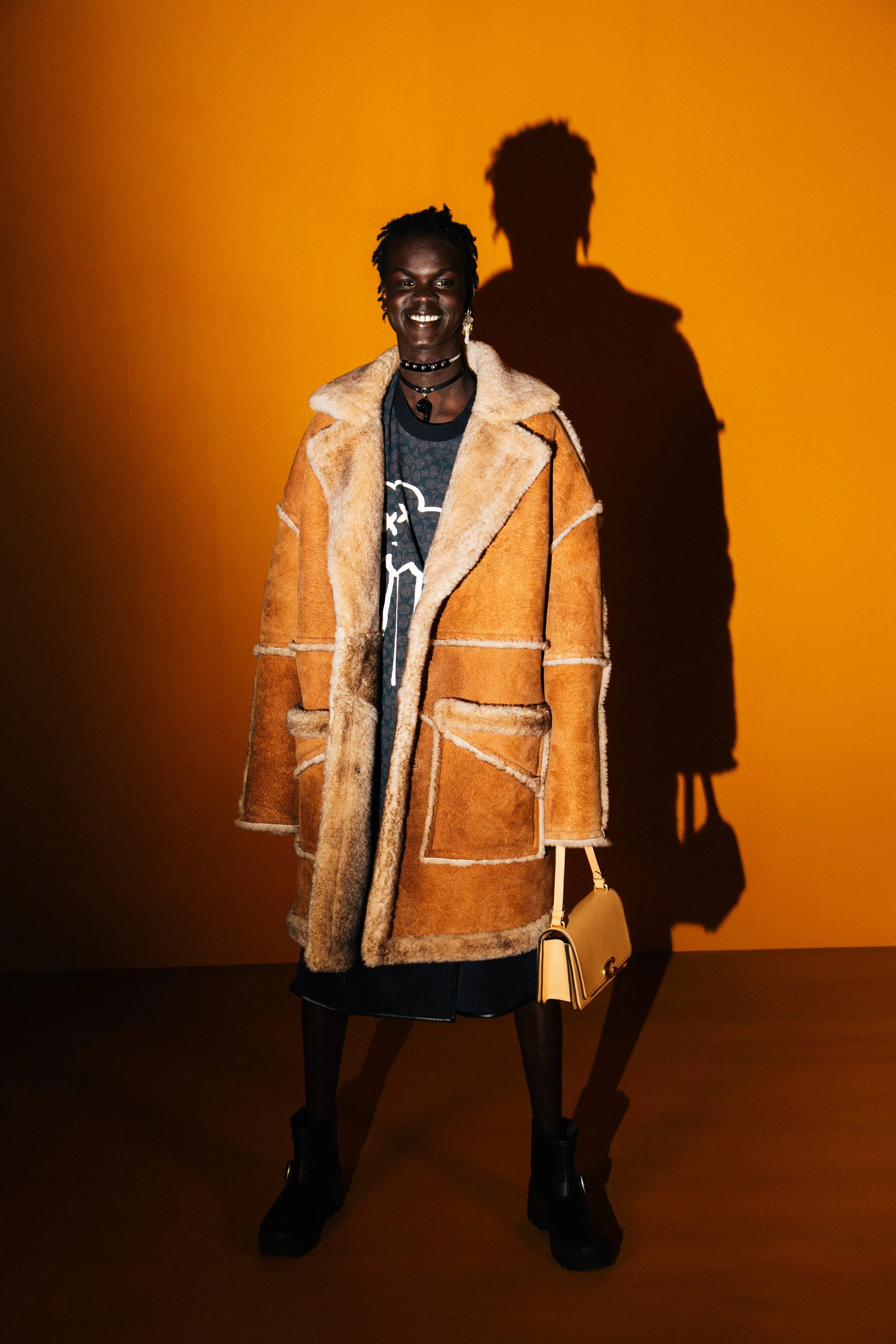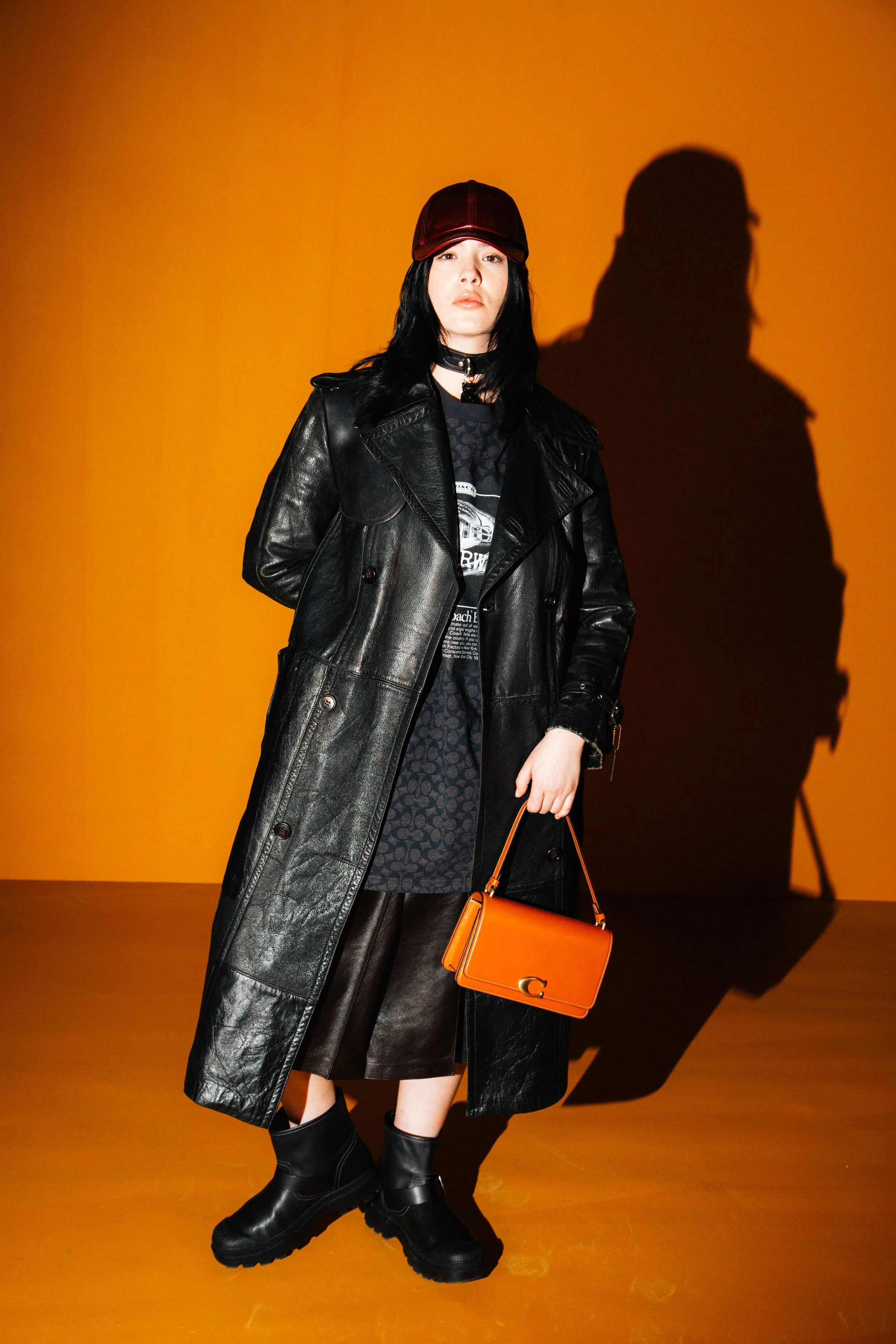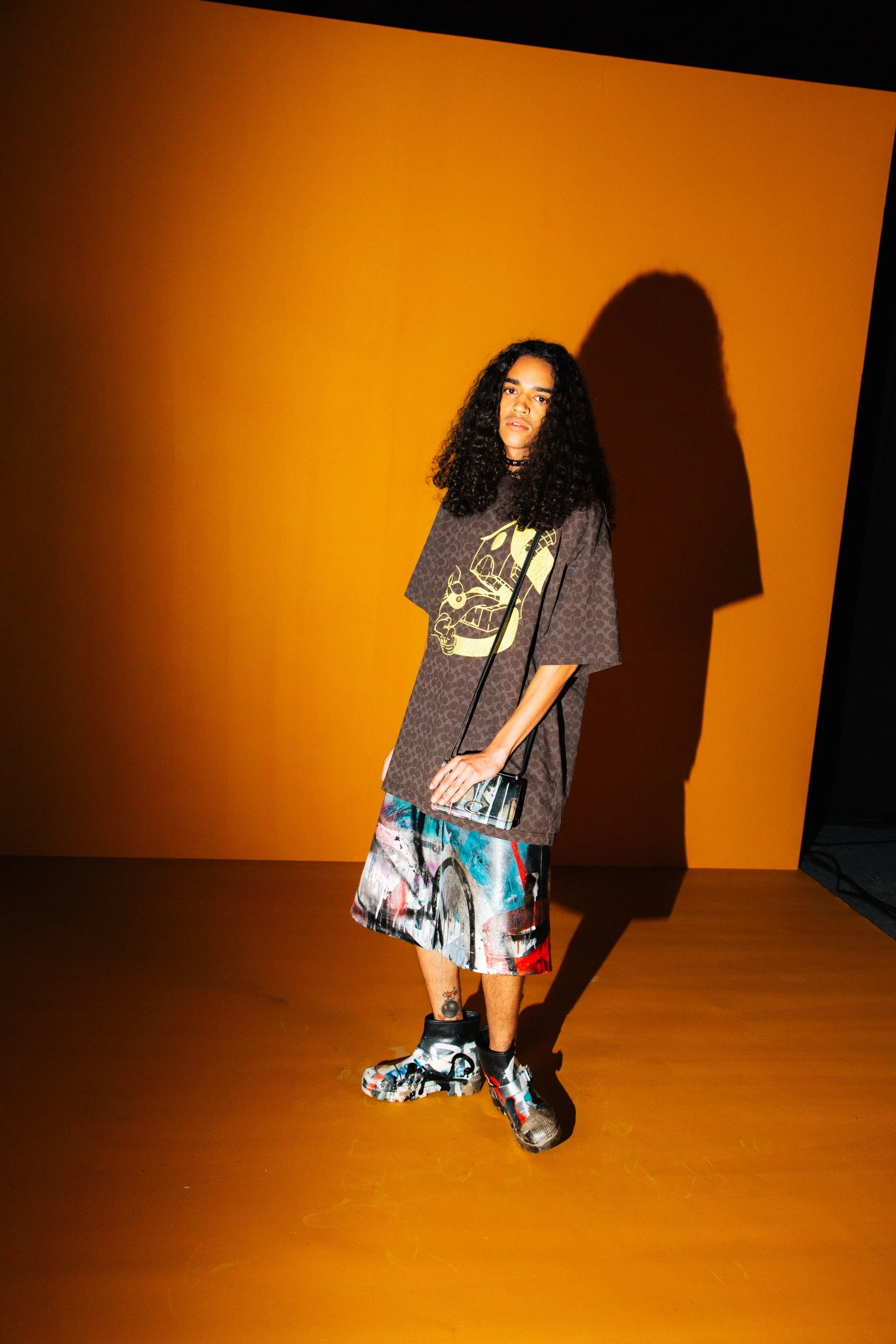Coach showcases optimism and the Great American Spirit for AW22.
“Welcome to the neighborhood! We’re so glad you’re here,” read “The Coach Neighborhood Newsletter.” In his show notes, Stuart Vevers’ characterized the collection, set “somewhere in America,” as “reenergized with the optimism and attitude of the next generation.”
Optimism perhaps, yet with a subtle subversive counterpoint. A waft of eeriness infiltrated the folksy charm of the set by Stefan Beckman, an all-beige, old-school neighborhood of simple houses, where, to open the show, one model walked her dog and another carted groceries out of an old station wagon. Similarly, the clothes telegraphed a sly antagonism, with references to house founder Bonnie’s Cashin’s signature outerwear as well as grunge and 70s leather bars. The lineup, Vevers said, “explores tensions between romance and toughness.”
Indeed so, within the context of Vevers’ inherent pragmatism. Over the years he has rendered it variously with Western or urban attitude, while never straying from his core belief in the primacy of function. Outerwear is at the heart of the message, and Vevers showed plenty, in big, cozy shearlings that looked particularly inviting on a frigid NYC day. These appeared in fresh renderings of Vevers’ signature layerings that featured a whole lot of huge t- shirts over skirts and pants. Then came interludes of various tropes – the short, sweet grunge-derived dresses Vevers loves, some in schoolgirl plaids, some in lace, some in textural crochet detailed sweetly with ribbons or pompoms; the leather-bar inspired vests and pants.
Vevers’ diverse range of models walked to a nostalgic musical mix that matched the pleasant familiarity of the clothes. Then, in the spirit of grunge, things took a turn for the dissonant, sonically and sartorially. As Sonic Youth’s take on the Carpenters played, new versions of the outwear appeared, these strewn with demonstrative graffiti done in collaboration with Mint&Serf. Every neighborhood has its rabblerousers, and here they injected attitude into Vevers’ nostalgic practicality.





















